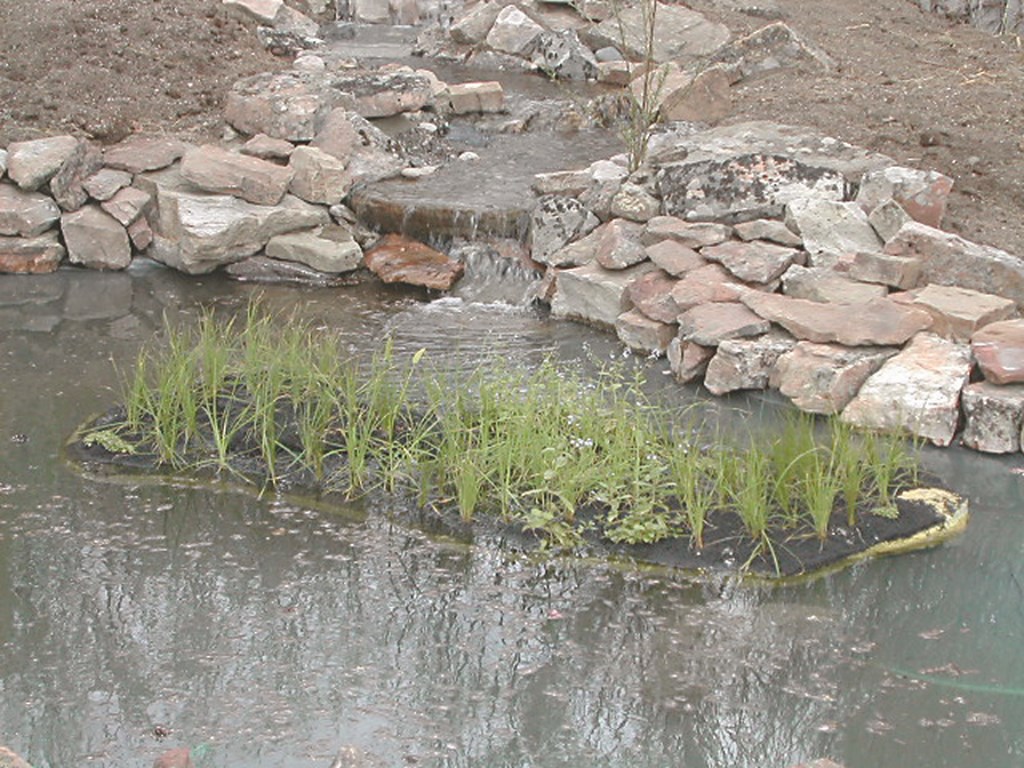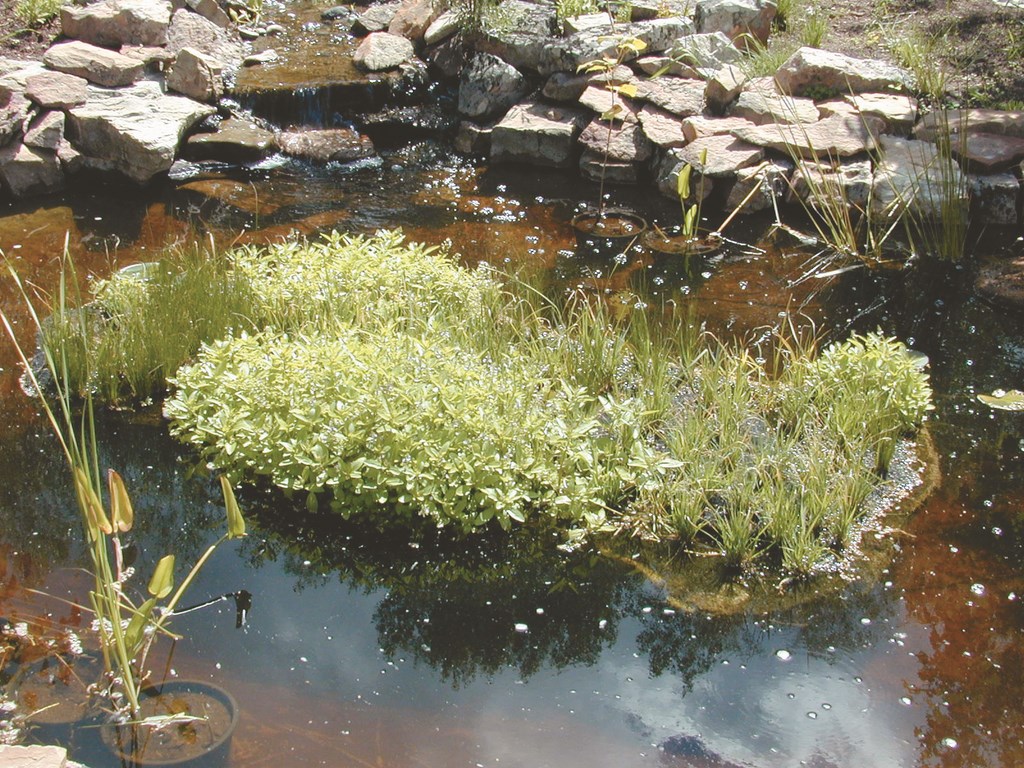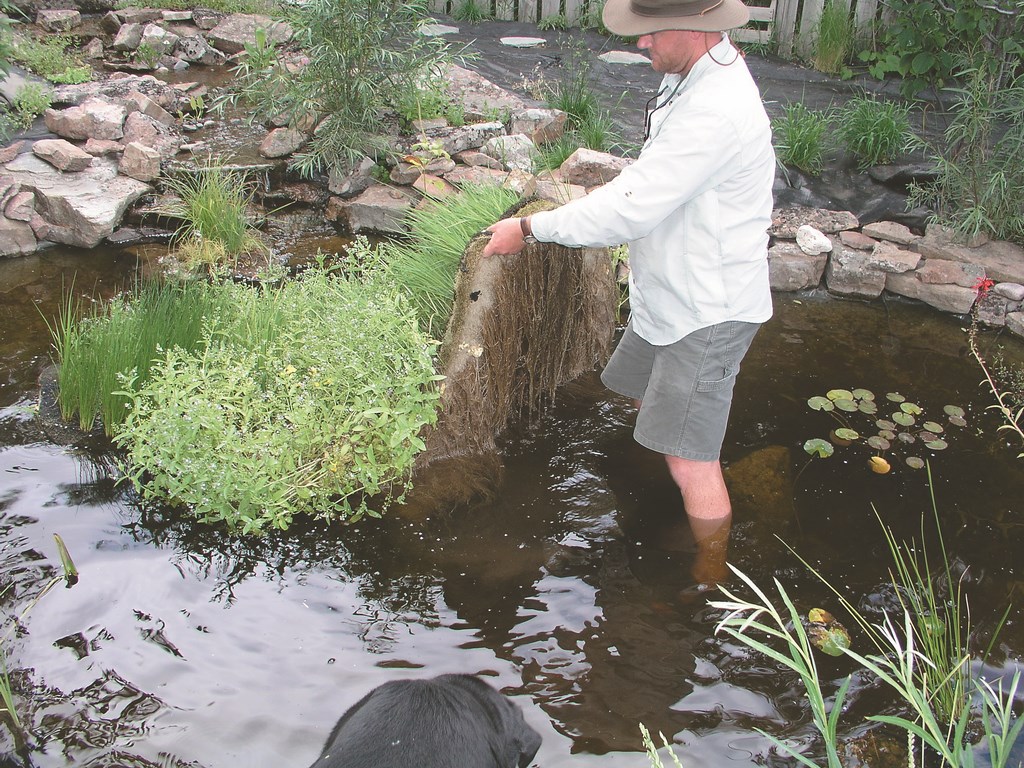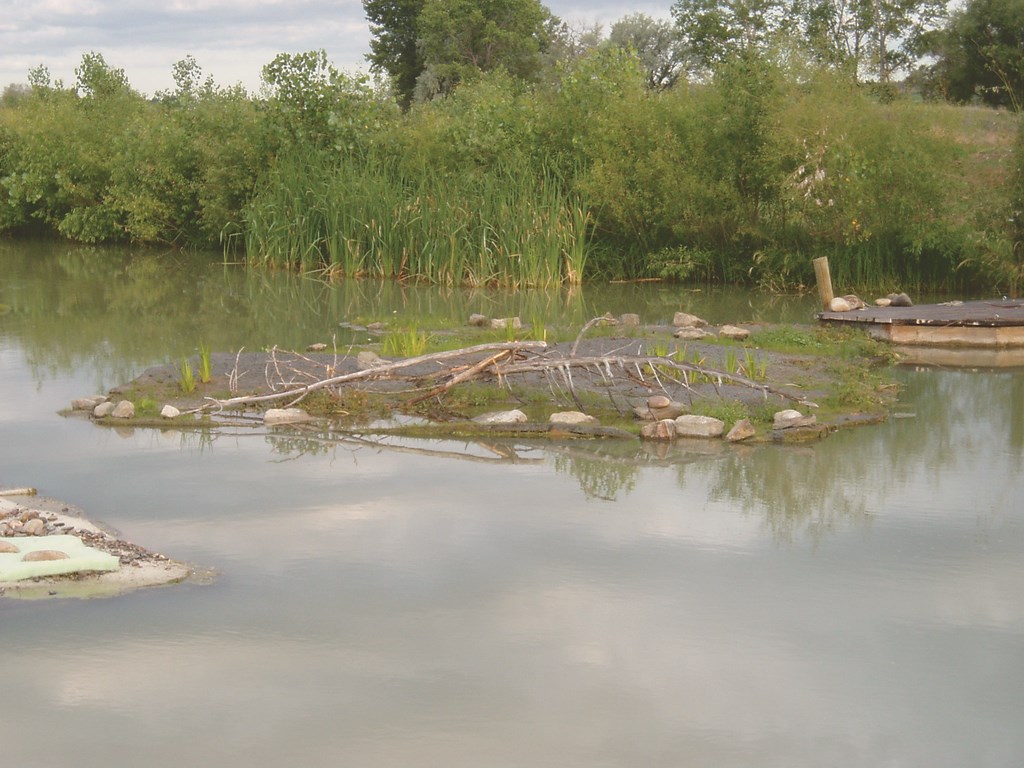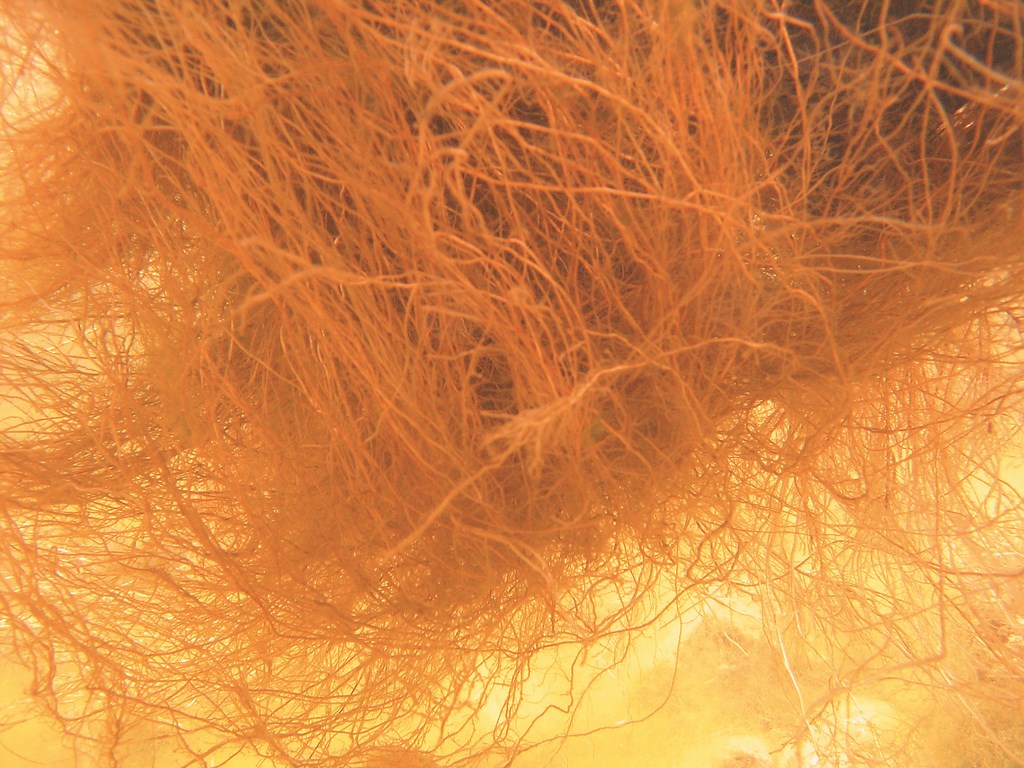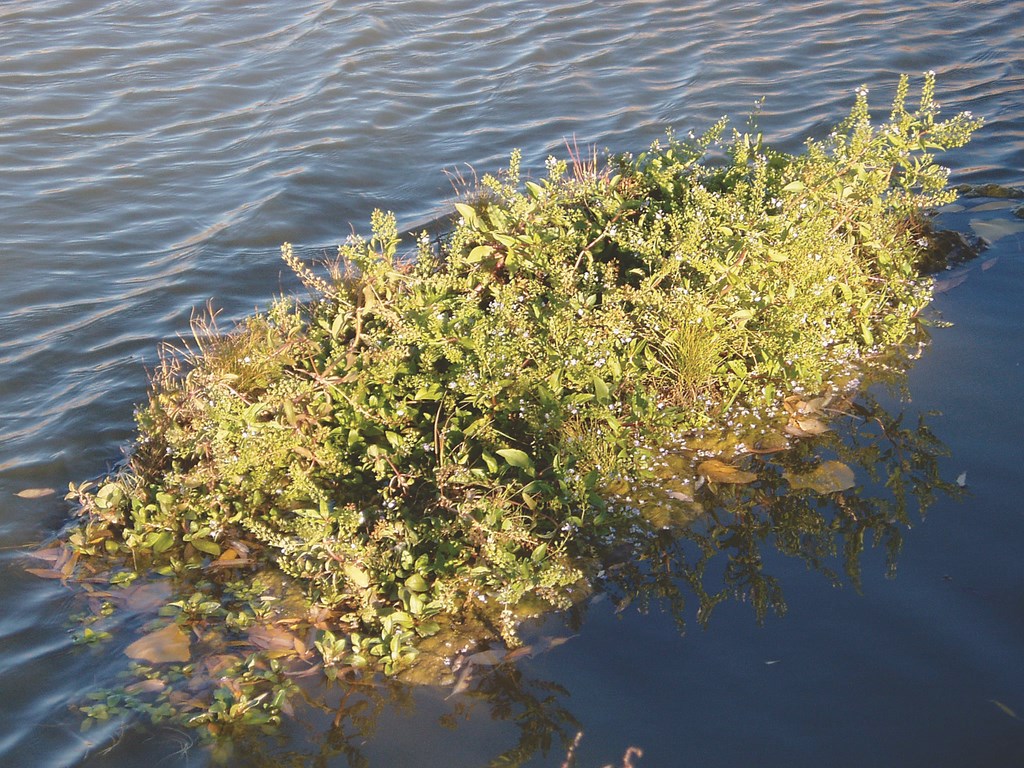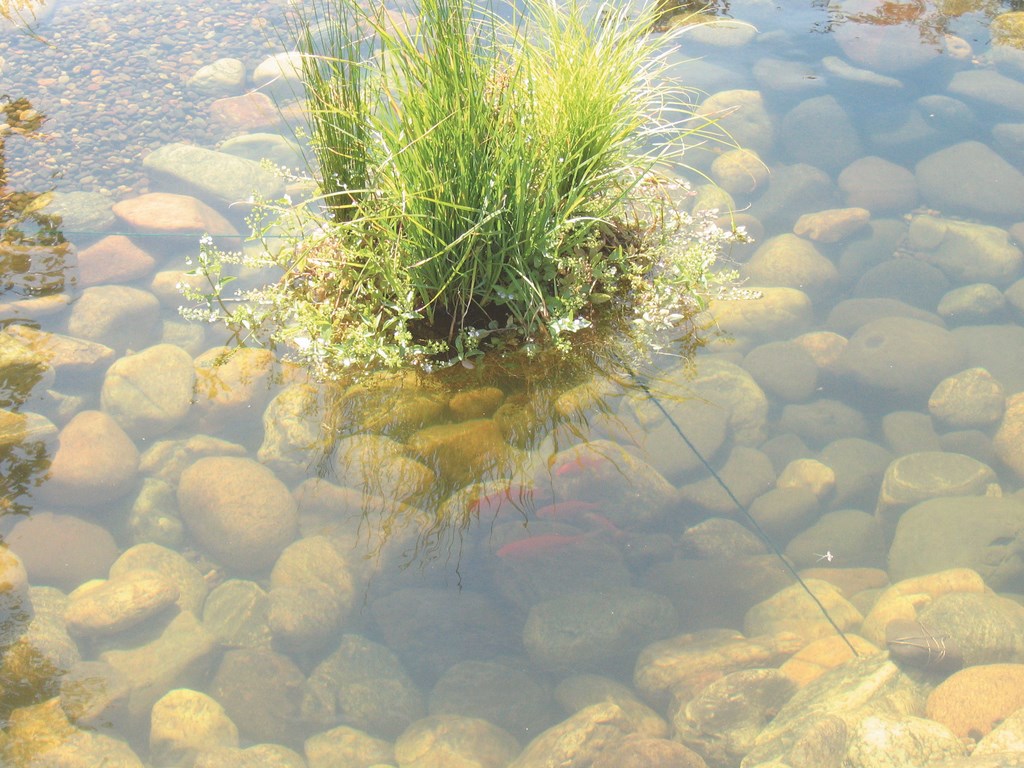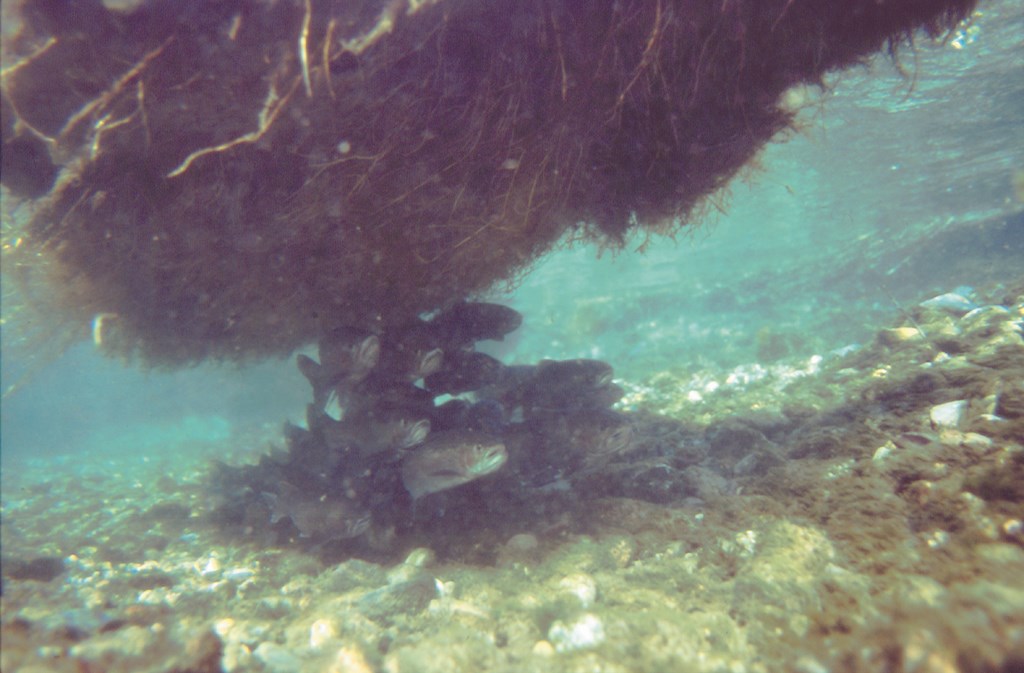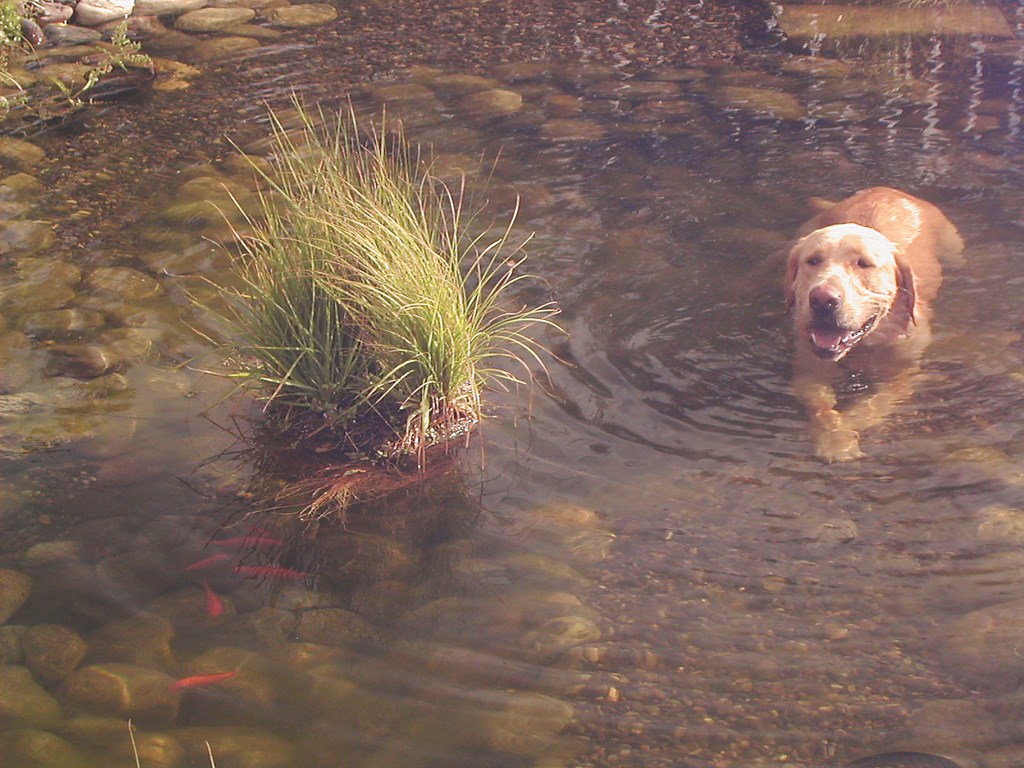Island Life
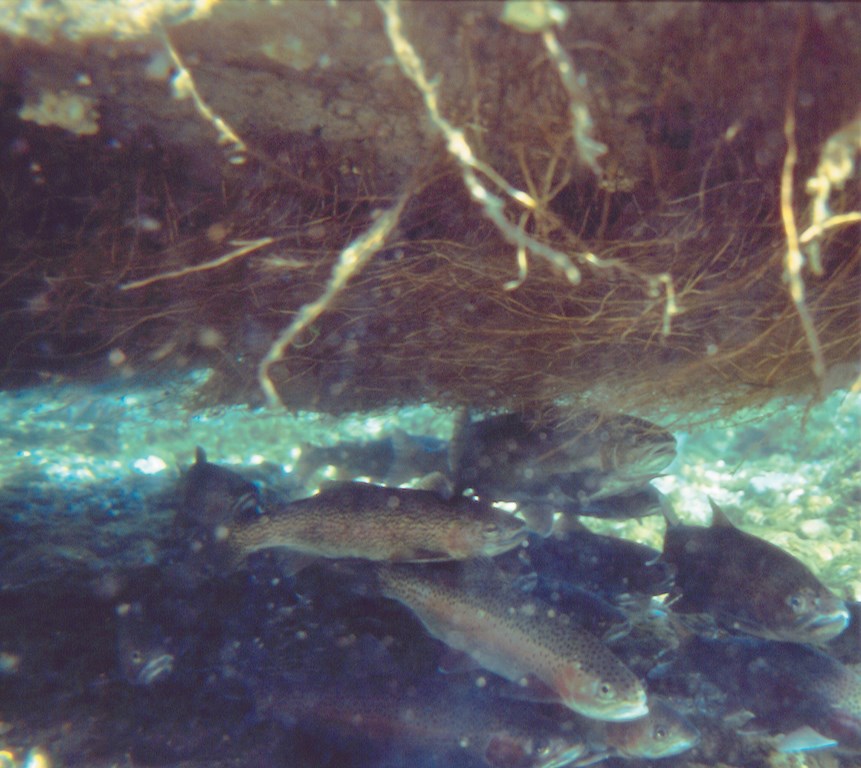
So often, the art and science of invention begins with the study and appreciation of nature.
While growing up in Wisconsin, I was repeatedly exposed to the naturally occurring islands often found floating on bodies of water amid the conifers in the northern, peat-bog region of the state. I couldn’t help noticing that these islands were exactly the best places to go fishing. They were just terrific, presenting a structure under and around which fish, for whatever reason, loved to spend their time.
Moreover, every floating island I’ve seen in nature is host to all sorts of flowering plants including American Speedwell, Monkey Flower, Blue Flag and even examples of the few native varieties of North American wild orchids along with incredible varieties of other broad-leaf plants, grasses and even trees. In many cases, I’ve seen species that don’t abound in the surrounding environment but thrive to exceptional levels on their floating havens.
In case it isn’t obvious by now, I’ve always had a passion for plant life, and it didn’t take me long once I began to think about these peat-bog islands to recognize that plant material thrives beyond the norm amid these naturally occurring hydroponic platforms. And it’s not just plants: These islands also play host to a wide variety of beneficial insects, fish, invertebrates, predators and just about any other species that draws its life from the water.
Finally, I also noticed that the quality of the water immediately associated with these peat-bog islands was almost always pristine.
FROM THE FARM
Although I didn’t know exactly where all of these observations were headed, it ultimately became clear to me that something highly dynamic was going on in and around these bog islands. Based on my lifetime of observation and subsequent study of natural systems at work, I began to see more and more potential in a man-made product that would replicate many of the systems occurring on these dramatic examples of the world’s bio-complexity.
Things began to coalesce in a practical way several years ago, after I’d purchased a research farm in Shepherd, Mont., as an adjunct to my ongoing invention business.
| From a humble start topped by shoots and seedlings, the illusion created by floating-island technology quickly becomes remarkably convincing. What looks like a natural patch of green on the water of this small pond is actually a completely artificial structure with an important role to play in the pond’s ecology. |
The site is located at the end of a 60-mile irrigation ditch that fills with runoff from surrounding farmland. The property is rich with water, including fourteen springs, two streams and two ponds. Given this large volume of flowing and percolating water and our proximity to farmland, it’s no surprise (but something of a disappointment) that water on the property is loaded with phosphorus and nitrogen – that is, fertilizer runoff.
As we developed the water systems on the property for a variety of reasons unrelated to floating bog islands, we ran into a range of fairly serious water-quality problems, not the least of which was the foul odors our dogs would wear for days after they went swimming in the ponds or streams. It occurred to me that if we had issues such as this in the headwater zone of Montana, how bad must it be in Louisiana?
The answer to that question is grim. In fact, there’s an aquatic “dead zone” at the mouth of the Mississippi that covers 22,000 square kilometers of ocean. This is an area that should be rich with life, but that is essentially devoid of oxygen because of the contamination of the river water with fertilizers and other man-made wastes. I soon learned that there are 34 other dead zones, many of which are growing, in various places around the planet.
| Floating islands can range from small to quite large, as seen here, and have enough buoyancy to support rocks and substantial animal life. One of the focuses of our research has been finding the right relationship between the size of a pond and the size of its floating island. |
At that point, I started thinking seriously about how these nutrients might be removed from the water in ways that would not involve the use of materials or chemicals that would bring additional consequences with them. As I so often do in my inventive processes, I started by wondering if there wasn’t some natural phenomenon that could be borrowed and applied.
I soon began thinking about the islands I’d seen as a child – with the thought clinched by another factor: Predators (foxes, minks and other rapacious creatures) were ravaging ground-nesting birds on our farm, and it made me think about ways in which floating islands might provide sanctuary for birds and waterfowl.
I’ve oversimplified the developmental chain in the interest of getting on with the bigger story, but you get the idea: My foul-smelling dogs precipitated a line of thinking that led quite directly to artificial floating islands.
EXPERT ASSISTANCE
As is the case with most of my new inventions, I immediately went about engaging talented people to develop the concept. In this case, I turned first to Frank Stewart, a civil engineer who specializes in hydrology and who had already dedicated more than ten years to pond, stream and watercourse design – and immediately saw potential in the project.
| The permeability of the island’s structure allows roots to reach down into the water where they take up nutrients and provide safe haven for fish and other aquatic life. In this way, the system helps ponds and other biological water systems fend off challenges posed by nutrient-rich runoff. |
As design ideas emerged, Stewart and I enlisted Thomas Coleman and Russell Smith of Aquatic Design & Construction Services (ADC Services) of Livingston, Mont. Coleman, an environmental engineer, and Smith, a degreed environmental conservationist, have spent years designing and implementing sustainable watershapes and have led waterway-restoration projects throughout Montana – for stream and river systems; lake and pond habitats; and wetlands and their associated uplands.
With their extensive experience in building ponds that conserve water while providing environments in which fish thrive, they offered the horticultural and biological knowledge crucial to developing the floating-island concept.
Starting with materials scavenged from other projects around the farm, the team began building prototypes. During the next several years and more than 200 prototypes later, the current island-body configuration starts off at about six inches thick and can be made in any free-form shape. From the outset, our aim was to create a biomimetic replication of a wild floating island, and we now believe we’ve captured many of the most critical systems that happen on wild floating islands.
| The plants that can be sustained on floating islands are as various as the range of specimens found in any wetland terrain. Those seen here are species commonly found in the mountains of Montana, but just about any plant that thrives in an aquatic environment will do well. |
The basic idea is that plants grow through the island’s structure and that their roots extend into the water beneath the island to absorb nutrients – thus serving the dual purpose of feeding the plants on the island and essentially filtering the water and clearing away algae-feeding nutrients.
After investigating materials and exploring possible structural forms, we settled on a recycled-polymer matrix as our main construction material. The filter-like batting worked well as both structure and growing surface, creating an adjustably buoyant “island” that could easily be trimmed to various shapes and sizes. The polymer also presents a tremendous volume of surface area and is well suited to serve as host to plants, microbes and beneficial insects. All these life forms represent bio-complexity, the result of which is, ultimately, a healthy environment.
BIO-COMPLEXITY
For help with the nutrient challenge, the project team turned to Al Cunningham, a professor of civil engineering at Montana State University (Bozeman, Mont.) who specializes in aquatic microorganisms (including bacteria), and Jim Keeton of Keeton Industries (Fort Collins, Colo.), a firm with 30 years’ experience in public and private water-treatment systems in the United States and abroad.
Keeton developed a way to use phosphate-eating microbes to counteract the eutrophication process (see the sidebar below for details). To effect this scientific plan, he takes the low-tech approach of lobbing a water-soluble bag of microbes into the pond so it bumps up against the island – a step that basically turns the immense surface area of the island structure into a giant, phosphate-removing biological filter.
|
Inspired by the Wetlands Wetlands typically occur in low-lying areas saturated by fresh water at the edges of lakes, ponds, streams and rivers — or by salt water in coastal areas affected by tides but protected from waves. In wetlands of both varieties, the surface of the water (that is, the water table) is usually at, above or just below the land surface for long enough periods that the variety of plants is limited to those that are adapted to wet conditions and which in turn promote the development of soils characteristic of a wet environment. The floating island product described in the accompanying text is essentially a manufactured wetland form that provides an optimal environment for the establishment of aquatic plants. In addition, these diverse habitats benefit fish that require different conditions for spawning, feeding or seeking shelter from predators, and they also provide combinations of open water and protective emergent plants that are preferred by waterfowl. Finally, they offer a variety of food and cover for smaller organisms that are used as food by birds and larger animals. Some plants and animals are specially adapted to living in a wet environment. Most emergent plants, for example, have air spaces in their stems that enable oxygen to be transported to roots that may be growing in sediments that have no oxygen. Some of the trees that grow in swamps form a set of roots above the soil surface or above the water that allows them to transfer oxygen to their submerged lower roots. In saltwater wetlands, there are even plants that have developed specialized cells that limit the amount of salt that enters a plant – or specialized organs that excrete salt from the plant. In addition, some wetland microorganisms have adaptations that allow them to live in water or wet soil without oxygen. The symbiotic nature of microflora and fauna that develop under floating islands is the key to the product’s overall potential. In an optimized environment, the plants work in conjunction with our inoculated microorganisms to significantly raise the potential for the uptake of excess nutrients – the major cause of algae problems in living water systems. In our tests, we have used mostly plants native to our neck of the woods in the northern reaches of the Rocky Mountains, including wetland grasses and forbs. We’ve found certain species of forbs to be the quickest colonizers and more suitable for the application because of their rapid growth. Veronica americanus (American speedwell) has shown the most remarkable growth of all plant types, but this does not preclude the use of other wetland plants. In fact, use of a diversity of plants enhances aesthetics and makes for an island ecology that’s not only easy on the human eye but also serves a greater range of purposes for multiple species of microbes, insects and animals. — B.K. |
Root growth is the other major component in aquatic-system health. Given the surface area of the island matrix as well as its porosity and the fact that plants grow right through it, there’s a great deal of contact between the water and a large amount of root material. As mentioned above, this aids in the uptake of nutrients, but the roots also provide shade, safety and cover for fish while helping to control algae growth.
From the start, we were all amazed at how well the concept worked in field tests. Not only did the water in the area clear up as measurable residuals of various organic compounds plummeted in the pond, but we also observed an abundance of fish congregating beneath the island. We even started seeing leopard frogs on the island – a species we’d never seen anywhere on the property – as well as damselflies, needle bugs and other insects.
It soon became apparent that the test island was a lot more than a raft with plants growing on it. Instead, it had become a haven for a diverse community of plant, microbial and animal life forms, and the rate and level of nutrient uptake was far exceeding what might have been expected from the presence of plants alone.
| Perhaps the most noticeable byproduct of the island technology is wonderfully clear pond water, whether seen from perspectives outside the water or with a fish-eye view. |
As we’ve moved carefully toward the marketplace, we’ve also studied island size and location as well as ways in which the islands are planted. In a controlled environment such as a backyard, for example, a homeowner can consider use of non-native ornamental species. A golf-course landscaper, by contrast, might choose from species with optimal nutrient uptake and waterscape-beautification features, while a conservation organization might select native species particularly compatible with local fish and waterfowl.
With aeration, ready access to nutrients and a consistent supply of water as the islands rise or fall with the level of a waterway, plants on these islands may grow at several times the rate of their shoreline counterparts. With natural, seasonal cycle of plant growth and die-off, young islands especially may be expected to become higher and denser over time.
STEWARDSHIP
The design process continues even though floating islands are now ready for market. We’re currently doing research (as just one example among several) in conjunction with Delta Waterfowl of Bismarck, N.D. This 90-year-old research organization, founded by Aldo Leopold, is North America’s leader in examining waterfowl ecologies. The goal of our collaboration is development of inexpensive, predator-resistant islands.
On the broadest level, it is our hope that our floating islands will someday play a useful role in the preservation and restoration of natural rivers, lakes, wetlands and perhaps, thinking again about the estuary of the Mississippi River, even oceans. It’s our belief that by working wisely with the resources nature provides us, these precious resources can be maintained or returned to healthy biological states.
| Of all the side benefits of this project, the one that has produced the most happiness in my family is the fact that our dogs can swim to their hearts’ content and emerge without the foul odors that were an unpleasant fact of life when we first moved to the shores of Red Dog Pond. |
On a much more focused and immediate level, we want to see these islands applied where they will simplify maintenance and enhance the health of all species that draw life from aquatic environments in backyards as well as parks and golf courses.
To get there, we need to raise awareness of the balances involved in living-water systems and make it clear that floating islands, much like a garden, require careful installation and ongoing stewardship if they’re to do all they are capable of doing. We are certain that the result will involve more holistic approaches, fewer chemicals and less overall maintenance.
In the meantime, we continue our research and have developed a wealth of information about the way natural biological processes and habitats work and how floating islands can become part of the mix. We’ve studied the effects of such issues as plant selection, island size relative to the size of the body of water, nutrient loads, care and maintenance procedures and formation of land-animal habitat. We are constantly expanding our pool of knowledge.
As work proceeds in conjunction with a select group of watershapers, we’re carefully studying the results and making refinements in our recommendations and the data we provide those who want to deploy our systems. We’re also hearing from the field that island installations look beautiful and enhance environments in eye-pleasing as well as practical ways.
In the meantime, to commemorate the inspiration for our island project, we’ve named what was once a cesspool of nutrients “Red Dog Pond.” It now produces big fish, leopard frogs and damselflies instead of smelly red dogs.
Being around this project and perceiving its great promise fills us all with a sense of hope. Maybe we can figure out a way to live more gracefully and compatibly with natural systems that embody true health.
Bruce Kania is an inventor with a successful track record in the licensing of product concepts in the prosthetic, orthotic, textile and sporting-goods industries. He originated the idea of replicating natural, self-sustaining floating islands while working at his research farm in eastern Montana and runs what amounts to a think tank of independent contractors through his company, Fountainhead LLC of Bozeman, Mont. In his work, he deliberately draws on an enormous talent pool centered in and around the state, finding creative people with the right skills to achieve innovative and marketable results.











